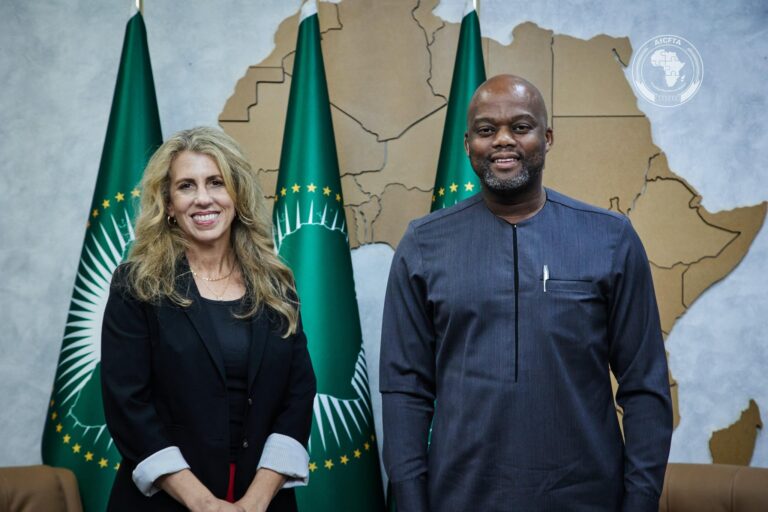The COVID-19 pandemic brushed away any doubt as to the importance of functioning and productive pharmaceutical industries.
Countries across Africa, a continent which struggled to gain equal access to vaccines and that imports the majority of its packaged medicines from abroad, know all too well the importance of a strong domestic pharmaceutical industry and trade.
Total demand for packaged medicines in Africa is worth around $18 billion annually, of which 61% is imported and 36% is locally produced and not traded. Just 3% of demand is met by intra-African trade.
Now, under the newly active African Continental Free Trade Area (AfCFTA) agreement, Africa’s pharmaceutical and medicine trade is about to receive a significant boost — one fueled by intra-African trade, alleviating some of African states’ reliance on outside economies
According to a new report by the World Economic Forum, AfCFTA: A New Era for Global Business and Investment in Africa, the pharmaceutical industry is likely to be among the prime beneficiaries of the introduction of frictionless trade in Africa.
The industry’s high product complexity means there are tremendous opportunities to invest in local value chains for goods such as packaged and unpackaged medicines, vaccines, medical instruments and bandages — all of which have high local valued added potential — and the AfCFTA will open the possibility of meeting local demand locally as well as make it easier to overcome production barriers in a short time frame.
According to the AfCFTA Private Sector Strategy, cited in WEF’s report, 40% of the disease burden on the continent is due to HIV/AIDS, tuberculosis, malaria, diarrhoea and respiratory diseases, all of which are typically treated by packaged medicines. Any growth in the packaged medicines industry on the continent will not only be good for business — it will save lives.
African pharmaceuticals are an uneven field
Local African production of packaged medicines currently centres on formulation — 300 manufacturers across the continent — and packaging, with limited upstream R&D or production of intermediates and Active Pharmaceutical Ingredients, the latter of which there are just five spread across Africa.
There are currently around 600 manufacturers of packaged medicines on the continent, and these are highly concentrated in eight countries (80%), with North Africa leading the way. Only four countries have more than 50 manufacturers, while 22 countries have none.
Yet according to the United Nations Industrial Development Organization, Africa’s growing expenditure, expanding provision, maturing business environment — of which the AfCFTA is a part — and increasing generalisation will bring growth to the pharmaceutical industry, projected at 5.13% CAGR from 2022-2027.
AfCFTA offers key opportunities for growth
The gap between local demand and local production provides immense potential for investment — especially given the transformed business and regulatory environment. The potential for profit-driven investment alone is huge, but any successful investment will likely have a positive societal impact, too.
Regulatory challenges that have long hindered the growth of the pharmaceutical industry in Africa are already being mitigated by the AfCFTA. For example, the Africa Medicine Regulatory Harmonization (AMRH) initiative is tackling the problem of misaligned regulatory frameworks by addressing the challenges that led to poor access and overpriced medicines.
The initiative has already achieved appropriate standards for four of the seven East African National Medicine Regulatory Authorities (NMRAs) and five West African NMRAs, and a reduction in marketing approval time from more than a year down to 7-8 months in the East African Community and the Southern African Development Community regions.
The AfCFTA will also help overcome the challenge of small fragmented markets in order to create a positive cycle of increased regional manufacturing, research and local talent. Small, isolated markets made it impossible for African countries to compete with Asian manufacturers. Today, a continental market can sustain greater economies of scale, which will help businesses achieve higher production volumes that will save them money. Regional markets will allow for specialisation, which ultimately will enable regional procurement markets that are beneficial for investors.
The AfCFTA will also open a wider range of opportunities in the types of activities that can be executed and sourced on the continent. These go beyond packaged medicines to include building quality healthcare infrastructure and increasing capacity for vaccine manufacturing. For example, since the onset of the pandemic, the Africa Investment Forum has facilitated investments including five transactions valued at $484 million total for projects ranging from the creation of a multinational health fund to a mobile telemedicine product.
Novartis: recognising the opportunity
Novartis, one of the largest pharmaceutical companies in the world, has responded to these new opportunities by creating an organization dedicated to increasing patient reach in sub-Saharan Africa fivefold by 2025.
Novartis’ strategy revolves around four areas in which the company believes the AfCFTA will have the greatest impact:
1. Sustainable health care systems
The AfCFTA can provide incentives for partnerships between governments, companies and international organizations to support a shift away from reliance on donor funding and toward building sustainable, resilient health systems across the Sub-Saharan Africa region. Novartis supports regional and national capacity building by providing time, expertise and financial support.
2. Innovation policy, intellectual property rights
The AfCFTA supports regional and national bodies in developing Intellectual Property laws that nurture innovation, which is especially pertinent to digital health. Novartis recognises the challenges that may interfere with the proper functioning of Intellectual Property as a market-based incentive in the world’s poorest countries. For this reason, Novartis does not seek or enforce patents in the Least Developed Countries, Low-Income Countries or in 80% of Lower-Middle Income Countries.
3. Effective regulatory systems and harmonisation
Novartis recognises the role of the AfCFTA in increasing the harmonisation of regulation to make it clear, transparent and robust. The company looks to partner with regulatory bodies to accelerate patient access to medicines while reducing the burden on individual countries.
4. Manufacturing localisation
Novartis focuses on local manufacturing and on regional hubs where the optimal building blocks — infrastructure, workforce capacity and capability and stability — are in place. The company sees the AfCFTA as a great opportunity for structuring an enabling environment at the regional level in order to attract investment.
Novartis is just one example of the immense investing potential in pharmaceuticals across Africa, and its strategy provides a blueprint for how to interpret and translate the AfCFTA’s impact on the sector into company-specific actions.
As the AfCFTA accelerates regulatory harmonisation and incentivises local production, opportunities will abound for new investors across the value chain to access new markets while strengthening the resilience of African healthcare and economies.
Source: World Economic Forum


